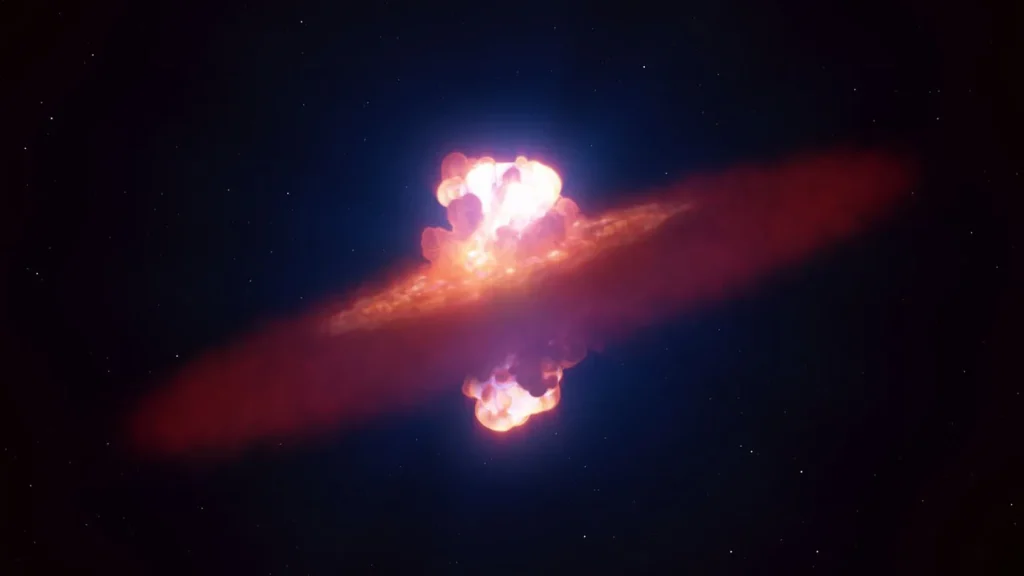A Supernova’s Unusual Beginning: Shaped Like an Olive
In an exciting astronomical breakthrough, scientists have captured unprecedented observations of a supernova’s first moments, revealing its initial shape resembled an olive. This remarkable finding, published in Science Advances on November 12, provides crucial insights into how these massive stellar explosions begin.
When astronomers detected a supernova in a nearby galaxy on April 10, 2024, they mobilized quickly. Within 26 hours, an international team gathered detailed observations before the explosion progressed too far. Their swift action produced the earliest-ever look at a supernova’s shape, showing the blast wave breaking through the star’s surface. These observations represent some of the most comprehensive views ever captured of a supernova’s initial moments.
“The very first particles of light and matter do not shoot out spherically from the star’s surface,” explains Yi Yang, an astronomer at Tsinghua University in Beijing and study coauthor. “Scientifically this is very important, because the intrinsic shape of the shock breakout tells us a lot about how it was triggered at the heart of the star.” This asymmetric, olive-shaped explosion pattern provides vital clues about the mechanisms that initiate these cosmic catastrophes.
The findings shed light on the life cycle of massive stars. Stars at least eight times the sun’s mass typically maintain equilibrium between their outward fusion pressure and gravity. However, when they exhaust their fuel, this balance collapses. As the star’s upper layers fall inward and hit the core, they create a rebounding shock wave that breaks through the surface, releasing enormous energy as a supernova. The precise mechanics of how this shock wave begins has been a persistent astronomical mystery—one that these new observations help clarify.
Using the European Southern Observatory’s Very Large Telescope in Chile, researchers employed a technique called spectropolarimetry to measure the orientation of the supernova’s light. This allowed them to reconstruct the explosion’s shape in its earliest phase, revealing its distinctly elongated, olive-like form rather than the uniform spherical shape that might be expected. Princeton University astrophysicist Adam Burrows, who wasn’t involved in the study, noted, “The modern theory of supernova explosions seems to be validated in broad outlines by these data.”
While these observations don’t completely explain how this type of supernova is triggered, they narrow down the possibilities significantly. The findings support the theory that neutrinos—nearly massless subatomic particles—become energized deep within the star, heating the infalling upper layers similar to water boiling in a pot. Just as boiling water bubbles irregularly, the star’s material bubbles up in a non-uniform pattern, eventually creating an asymmetric shock wave.
“This is a unique set of data which may presage much better stuff for the future,” Burrows adds. As upcoming astronomical surveys detect more supernovae, following them with similar precision could usher in “a new era of dialogue between theoretical study of these explosions and their observational validation.” This olive-shaped supernova may be just the beginning of a revolution in our understanding of these cosmic explosions that shape our universe.















